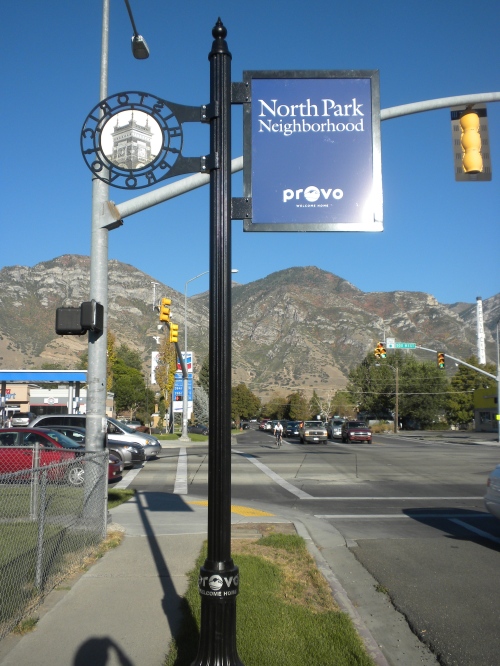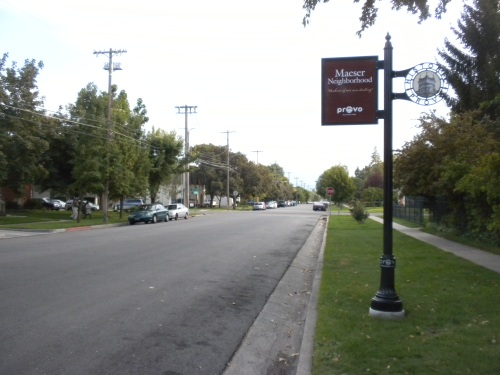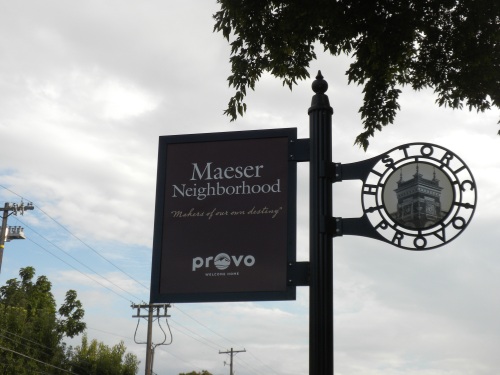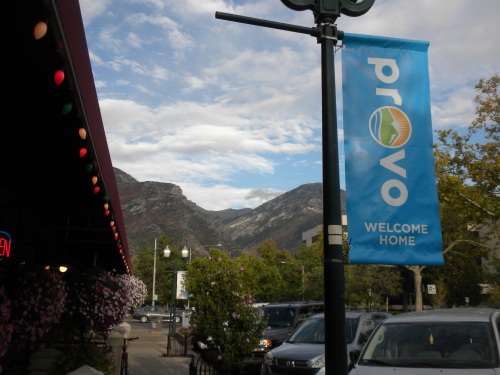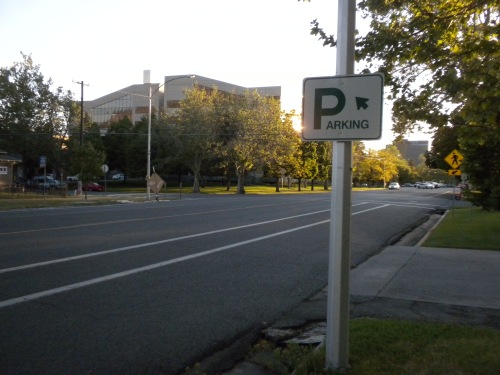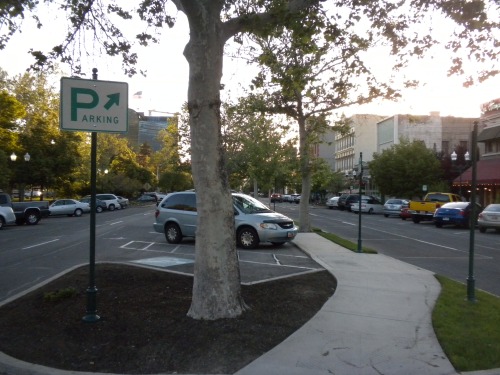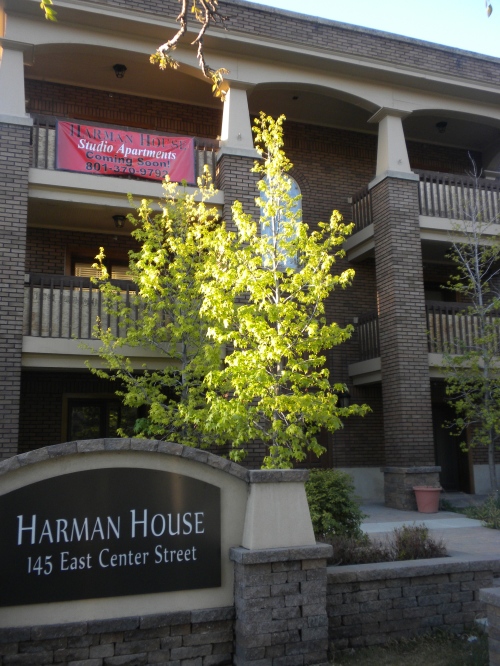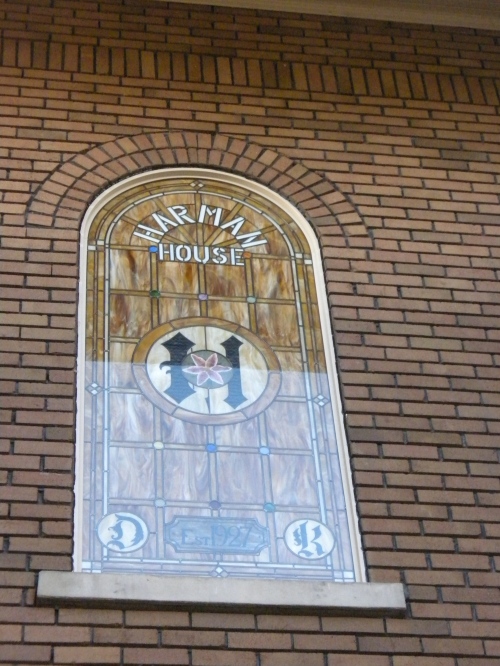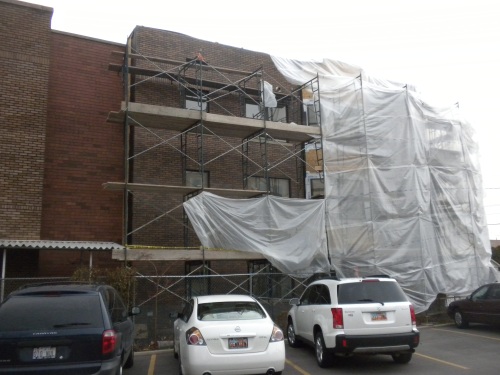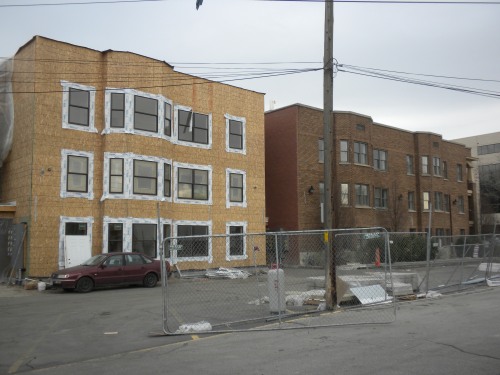The Joaquin neighborhood recently got a brand new sign. It’s located on 500 North and roughly 80ish East.
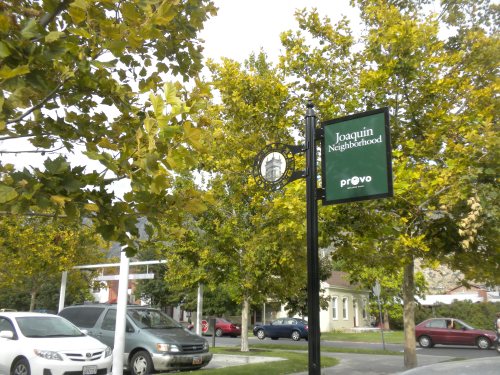
This new sign identifies the Joaquin neighborhood and is located just south of the library.
In theory, this simple sign could help people navigate the surrounding area, bolster neighborhood pride and identity, and even simply alert people that Provo has distinct neighborhoods. In other words, I think there are real social and economic benefits to having signs like this one.
But unfortunately, the sign was installed in such a poor location that it misses out on nearly all of those benefits.
The first problem is that the sign was placed behind two trees — which happen to be the most closely-spaced on the entire block — and is consequently almost invisible. It was so hard to see that I couldn’t even get a good picture of the entire thing.
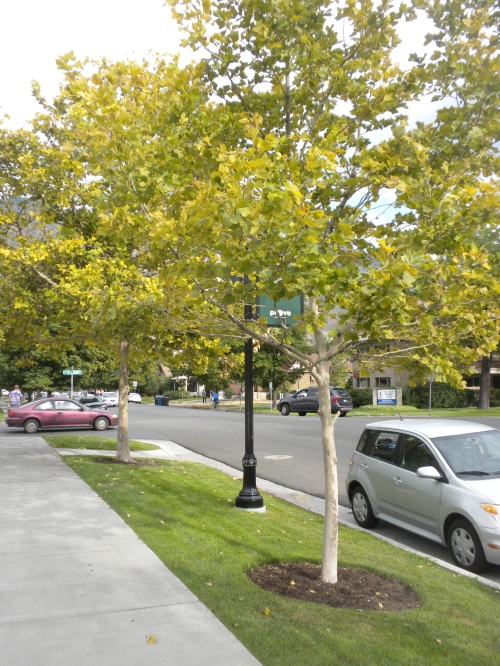
This is a typical view of the sign. A few more steps back and it would have been completely obscured. It’s also worth noting that these trees are only going to get bigger. Odder still, none of the other trees on this block are as close together, meaning the sign was placed in the midst of the densest foliage in the area.
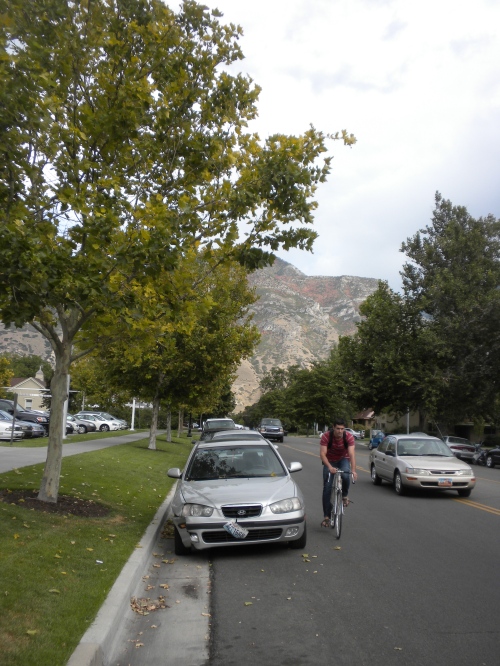
Can’t see the sign? That’s because it’s completely blocked by the trees.
Even moving the sign 10 yards to the west would have made it a bit more visible. As it currently stands, however, the placement is about as bad as it can be.
A sign entirely blocked by two trees is bad enough, but in this case it also happens to be on the wrong side of the street.
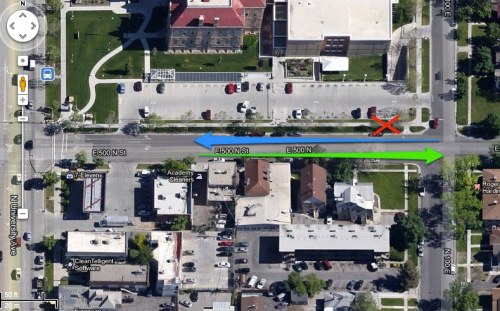
A satellite view of 500 North in Provo, between University Ave and 100 East.
In the picture above, the green arrow indicates the direction of eastbound traffic and the blue arrow indicates westbound traffic. Although this block is technically already part of Joaquin, the majority of the neighborhood lies to the east, in the direction of the green arrow.
Conversely, westbound traffic moving along the blue arrow is effectively leaving Joaquin.
Yet bafflingly, the sign — marked by the red X — is located on the north side of the street and therefore aimed at people traveling west, exiting the neighborhood.
Even more tellingly, the metal “Historic Provo” portion of the sign faces people traveling west. To see what I mean look at the first picture above (you may have to click to enlarge it) and note that the words “Historic Provo” are backward. That’s because I was facing east, toward the Joaquin neighborhood, when I took the picture. Again, the point is that the sign is directed at people leaving Joaquin, which makes no sense and is actually quite confusing.
Though I think these types of elements can be effective and relatively inexpensive ways to enhance a neighborhood, this sign’s placement offers a poignant example of how to waste resources and good intentions. The one ray of hope is that unlike a large building or infrastructure project, this sign could very easily be moved and improved.
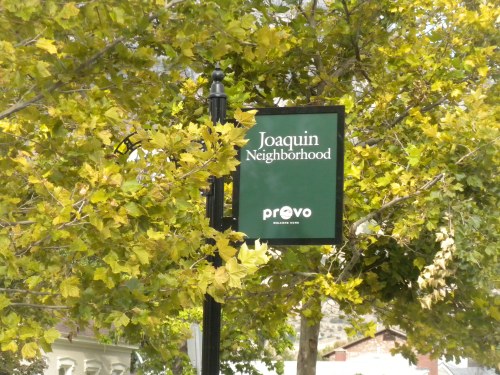
If I didn’t already know what the Joaquin neighborhood was, this confusing and poorly-placed sign wouldn’t have helped me find out.
